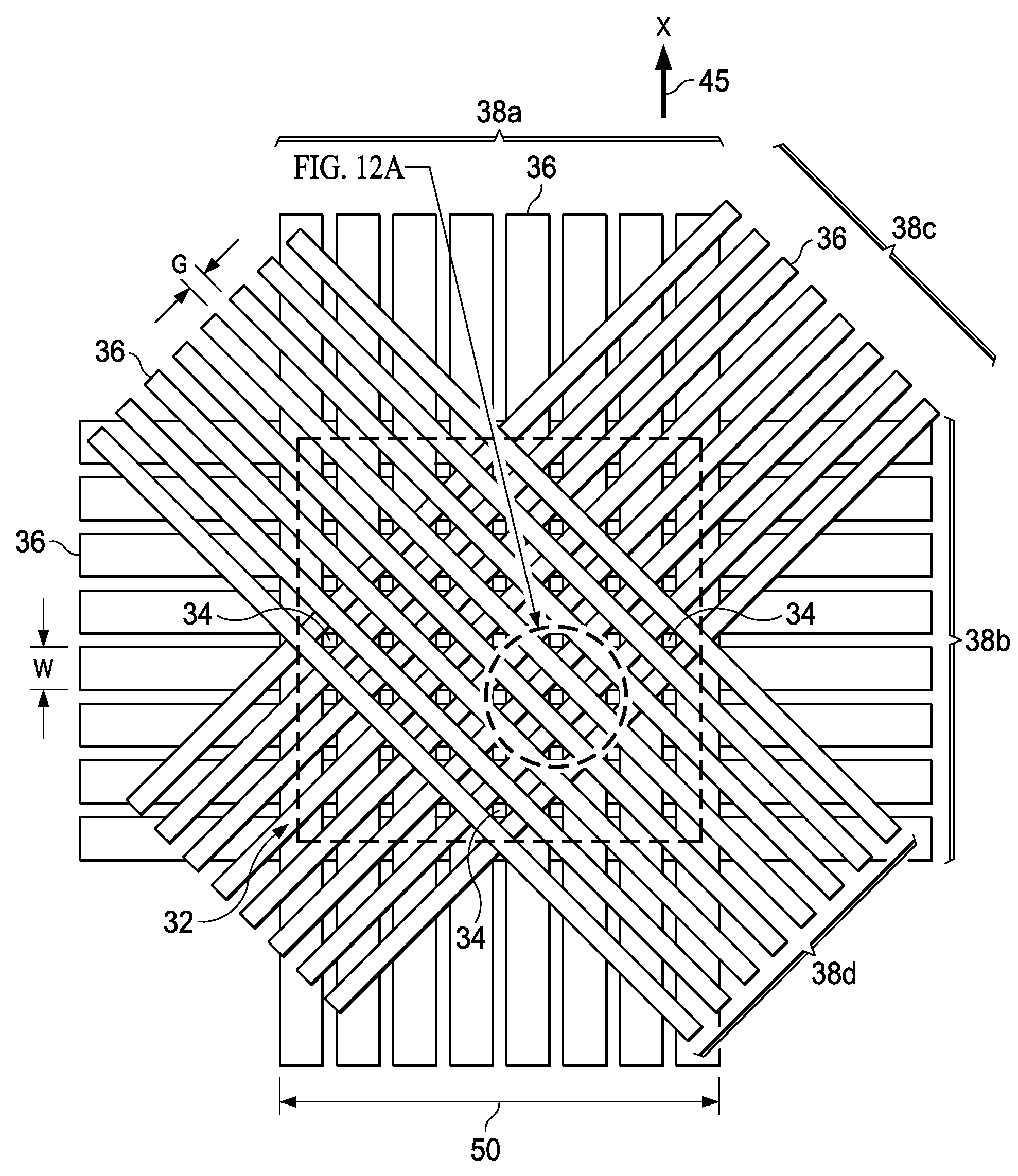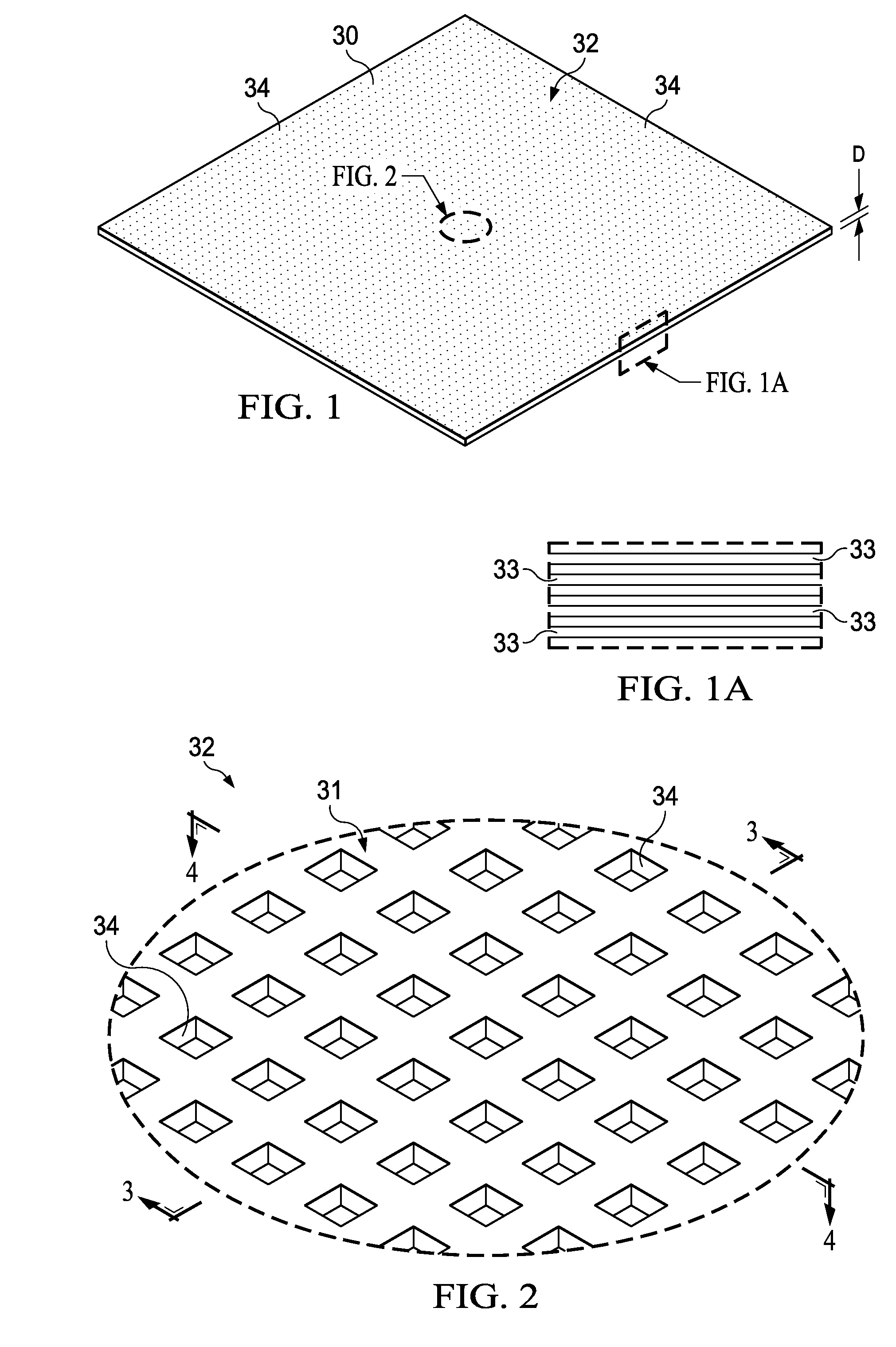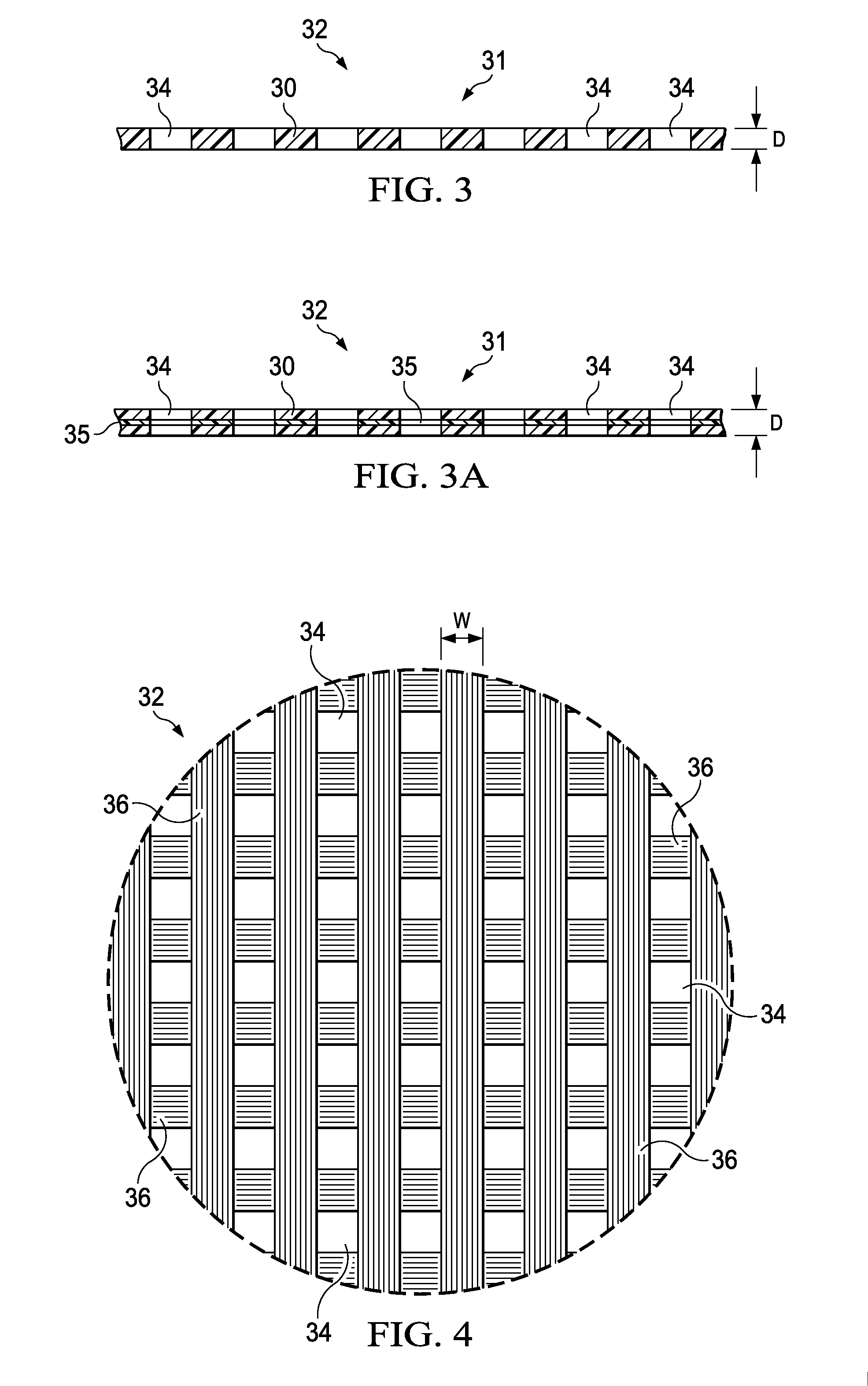Composite Laminates Having Hole Patterns Produced by Controlled Fiber Placement
a technology of controlled fiber placement and composite laminates, which is applied in the field of composite laminates, can solve the problems of difficult removal from the cured laminate, high production cost, and time-consuming current techniques for forming a large number of perforations or holes, and achieves high repeatability and usefulness, improve acoustic properties of the laminate, and improve the effect of production ra
- Summary
- Abstract
- Description
- Claims
- Application Information
AI Technical Summary
Benefits of technology
Problems solved by technology
Method used
Image
Examples
Embodiment Construction
[0039]Referring to FIGS. 1-3, a composite laminate includes a plurality of perforations or holes 34 therein which are arranged in a pattern 32, sometimes hereinafter referred to as a hole pattern 32. In the illustrated embodiment, the holes 34 pass completely through the depth “D” of the laminate 30, however it may be possible to form the holes 34 only partially through the thickness of “D”. In the illustrated embodiment, the hole pattern 32 is a regular pattern in which the holes 34 arranged in a matrix, however in other embodiments the hole pattern 32 may be irregular, depending upon the application. The laminate 30 comprises a plurality of plies 33 (FIG. 1A) of a fiber reinforced resin such as, without limitation, carbon fiber epoxy or other thermoset, or a fiber reinforced thermoplastic.
[0040]In some embodiments, as shown in FIG. 3A, one or more layers 35 of material may be embedded between the plies 33 in order to tailor the laminate 30 to particular applications. The embedded ...
PUM
| Property | Measurement | Unit |
|---|---|---|
| widths | aaaaa | aaaaa |
| size | aaaaa | aaaaa |
| width | aaaaa | aaaaa |
Abstract
Description
Claims
Application Information
 Login to View More
Login to View More - R&D
- Intellectual Property
- Life Sciences
- Materials
- Tech Scout
- Unparalleled Data Quality
- Higher Quality Content
- 60% Fewer Hallucinations
Browse by: Latest US Patents, China's latest patents, Technical Efficacy Thesaurus, Application Domain, Technology Topic, Popular Technical Reports.
© 2025 PatSnap. All rights reserved.Legal|Privacy policy|Modern Slavery Act Transparency Statement|Sitemap|About US| Contact US: help@patsnap.com



